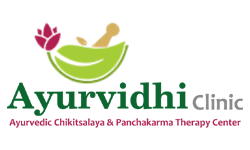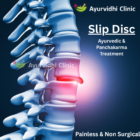Ayurvedic & Panchakarma Treatment of Cervical Spondylitis: An Ayurvedic Approach to Neck Pain Relief
Cervical spondylitis, also known as Cervical Spondylosis or Cervical Osteoarthritis, is a common degenerative condition that affects the neck region of the spine, especially in individuals with poor posture, sedentary lifestyles, and high screen exposure. This condition involves wear and tear of cervical vertebrae and intervertebral discs, leading to chronic pain, stiffness, and sometimes nerve compression.
In Ayurveda, this disorder falls under the category of “Greeva Sandhigata Vaata”, which denotes the vitiation of Vaata dosha in the cervical spine region. With Ayurvedic medicine and Panchakarma therapies, the pain and stiffness can be naturally relieved, and degeneration can be slowed down or even reversed to some extent.
🔍 Causes of Cervical Spondylitis (Ayurvedic & Modern Perspective)
🧬 Ayurvedic Causes for Cervical Spondylosis:
-
Vata Dosha Aggravation due to dry, cold diet or irregular routine
-
Dhatukshaya (Tissue depletion) due to age, malnourishment
-
Agnimandya (weak digestive fire) causing poor tissue formation
-
Ruksha (dry), Vishama (irregular) lifestyle
-
Overuse or strain on the neck muscles and joints
⚠️ Modern Lifestyle Causes:
-
Long hours of mobile or computer use (tech neck)
-
Poor posture while working or sleeping
-
Lack of physical activity or exercise
-
Neck injuries or trauma
-
Age-related disc degeneration
-
Stress-related muscle tension
❗ Symptoms of Cervical Spondylitis
-
Chronic neck pain and stiffness, especially in the morning
-
Radiating pain to shoulders, arms, or fingers
-
Numbness or tingling in hands or arms
-
Headaches, often originating from the neck
-
Loss of balance or dizziness in severe cases
-
Difficulty in neck movements and muscle weakness
🌿 Ayurvedic Treatment for Cervical Spondylitis
The Ayurvedic approach focuses on balancing Vata dosha, nourishing the affected dhatus (tissues), improving digestion (Agni), and eliminating toxins (Ama). The line of treatment includes:
1. Internal Herbal Medicines (Aushadha Chikitsa)
-
Rasna Kashayam – for joint stiffness & inflammation
-
Dashmool Kashayam– anti-inflammatory and Vata pacifying
-
Guggulu Kalpa – relieves joint and nerve pain, effective in neuromuscular disorders
-
Ashwagandha & Shatavari – rejuvenators and muscle relaxants
-
Shallaki & Guggul – natural pain relievers and anti-inflammatories
Note: Always use herbal medicines under Ayurvedic doctor’s supervision. These herbal medication are just for information. Not to consume without Ayurveda doctor consultation.
🛁 Panchakarma Treatment for Cervical Spondylitis
Panchakarma therapies help in deep detoxification, lubrication, and restoration of joint and nerve health.
🔸 1. Greeva Basti (Neck oil pooling)
-
Warm medicated oil is held on the cervical region using a dough ring
-
Relieves stiffness, improves flexibility, and nourishes the spine
🔸 2. Abhyanga (Ayurvedic Oil Massage)
-
Full-body massage with Vata-pacifying oils like Mahanarayan Taila
-
Reduces muscular stiffness, improves circulation
- https://wa.me/c/919511953471
🔸 3. Swedana (Herbal Steam Therapy)
-
Helps reduce pain, stiffness, and improves mobility
- https://wa.me/c/919511953471
🔸 4. Pizhichil or Patra Pinda Sweda
-
Warm herbal oils or bolus of medicated leaves applied over neck
-
Very effective for degeneration and inflammation
🔸 5. Nasya (Nasal medication)
-
Clears toxins from the head region
-
Beneficial in headaches, dizziness, and cervical-associated symptoms
🔸 6. Basti (Medicated Enema)
-
Helps correct Vata at the root level
-
Prevents recurrence and degeneration progression
- https://wa.me/c/919511953471
🍽 Diet & Lifestyle Guidelines:
✅ What to Follow:
-
Include warm, unctuous, easily digestible foods
-
Use ghee, garlic, ginger, and dashamoola decoctions
-
Practice light neck and spine exercises or yoga under supervision
-
Apply warm packs on painful areas
❌ What to Avoid:
-
Cold, dry, and fermented foods
-
Long hours on the phone or laptop without breaks
-
Sudden jerky neck movements
-
Exposure to cold wind or A/C air directly on neck
🧘 Recommended Yoga for Cervical Health
-
Matsyasana (Fish Pose)
-
Bhujangasana (Cobra Pose)
-
Neck rotations & shoulder rolls
-
Chin-to-chest stretches (gentle and supervised)
Conclusion
Cervical spondylitis may be a degenerative condition, but Ayurveda offers deep, long-lasting relief through its root-cause approach. Unlike painkillers or temporary neck braces, Ayurvedic & Panchakarma therapies work on balancing the doshas, strengthening the spine, and rejuvenating the nervous system.
If you’re struggling with chronic neck pain or related symptoms, consult a qualified Ayurvedic physician to begin a natural, drug-free, and holistic healing journey.







Recent Comments